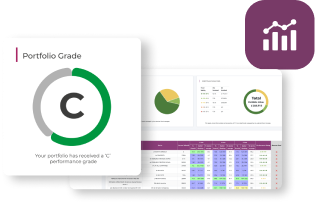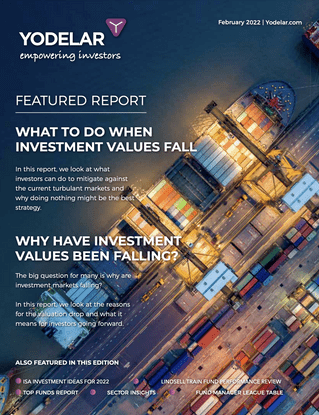When it comes to investing, defining your attitude to risk isn't easy. Only you can decide how cautious or adventurous you wish to be with your money. But despite its importance, simply defining your investment risk is just one small aspect of an even bigger process that is critical to the long-term prosperity of your investment portfolio.
It is the asset allocation of your portfolio that will help to control risk and define the success of your investments - According to Yale’s finance professor Roger Ibbotson, asset allocation accounts for up to 90% of a portfolios performance.
Although its importance is clear, the fact is, over time, many UK investors experience a wide shift in the asset allocation mix of their investments which has resulted in many to unwittingly assume considerably more risk than they ever intended.
So how can investors ensure their portfolio allocation consistently fits their specific needs without exposing them to increased levels of risk?
Why asset allocation is so important
Asset allocation is the process of dividing your portfolio among different asset classes such as equities, bonds, property, and cash assets.
Each asset classes perform differently over time because of economic conditions, market forces, and government policies. While investing in various equities gives you the greatest potential for gains, they are typically more volatile and therefore riskier than other types of investments. Therefore, when you diversify your investments across different asset classes, you reduce your exposure to risk. This is because when one asset class performs poorly, it can be offset by better performance of the other asset classes.
Selecting the right asset allocation
Determining the right asset allocation mix for your portfolio depends on factors such as: how much time you have to invest, how much growth you need to achieve to meet your financial goals, how much risk you're comfortable taking to achieve that growth and, crucially, how much you can afford to realistically lose if the markets fall. This will help to determine how and where you should invest your money.
To properly diversify, you should start with the four main asset classes: cash, bonds, equities and property. But even then, it's important to diversify not only between asset classes, but also within asset classes. This might mean investing in equities in different industries or regions such as North America or Japan, or in a mix of corporate bonds and government bonds.
How much should you allocate to each asset? It depends on three factors:
1. Your investment goals: Are you planning for retirement, or saving for a house?
2. Time horizon: How long will it be before you need the money?
3. Risk tolerance: Can you stand to watch your investments plummet at times knowing that, in the long run, you'll receive a higher return?
Your goals, time horizon, and risk tolerance will determine the model you should use.
If you can tolerate high risk to obtain a high return, you'll likely put more into equities. Those with a low-risk tolerance will likely stick with bonds. Those with a very low or zero risk tolerance, or who need their money within a short period of time, will likely have more focus on cash investments.
Why your portfolio needs rebalanced
If your portfolio is performing as it should, over time, your target allocation will get out of balance. This makes sense, as you would expect your equity holdings to outperform your bond assets or cash investments, so over time, you will end up with larger growth from your equity holdings.
For example, let's say you invest £10,000 to create a portfolio with your ideal asset allocation of 80% equities and 20% bonds. Your original portfolio will have £8,000 in equities and £2,000 in bonds. After five years, imagine your equity holdings have grown to £12,000 and your bonds are worth £2,400.
The asset allocation after these gains is now 83% equities and 17% bonds. To get the portfolio back to the target allocation, you would need to sell some of the equities and allocate the proceeds toward bonds. You can make these adjustments at fixed intervals or when your assets are out of balance by a certain percentage.
You should also consider adjusting your target portfolio to a more conservative allocation as you age, something that a lot of near-retirees wish they had done before the crash of 2008.
Risks of not rebalancing
An investor with a long-term retirement plan may start off with a moderately aggressive investment approach with more focus on riskier asset classes that offer greater potential for growth. They do so in the knowledge that should their portfolio experience losses they have the time to recover. However, as that investor gets closer to retirement their tolerance to risk reduces as does their ability to absorb any losses. Therefore, it is crucial that they rebalance the mix of assets in their portfolio to reflect a more defensive approach with their focus switching from growth to preservation.
An example of when the failure to rebalance had an enormous impact on investors was during the financial crisis of 2008, which resulted in many investors losing a significant proportion of their retirement savings, with some losing it ALL almost overnight.
Many of those investors had portfolios that were poorly maintained and left unattended for years. Therefore, over time their asset weighting shifted and they went from potentially assuming an initial cautious investment approach to a very high-risk approach. Subsequently, when the markets crashed their overexposed investments suffered catastrophic losses.
Get regular reviews
As an investor, how well your asset allocation fits your investment profile and how efficiently it is maintained will be critical to the success of your portfolio. To ensure your portfolio remains on track it is recommended that you rebalance at least annually. On top of this process you should review your portfolio performance at least twice per year to ensure the funds within your portfolio are consistently outperforming their peers. By carrying out these two processes effectively will help to ensure your portfolio stays on track and reach your overall objectives.














